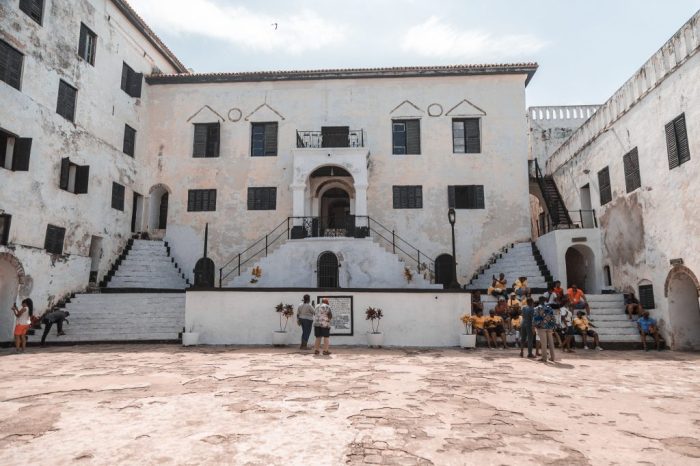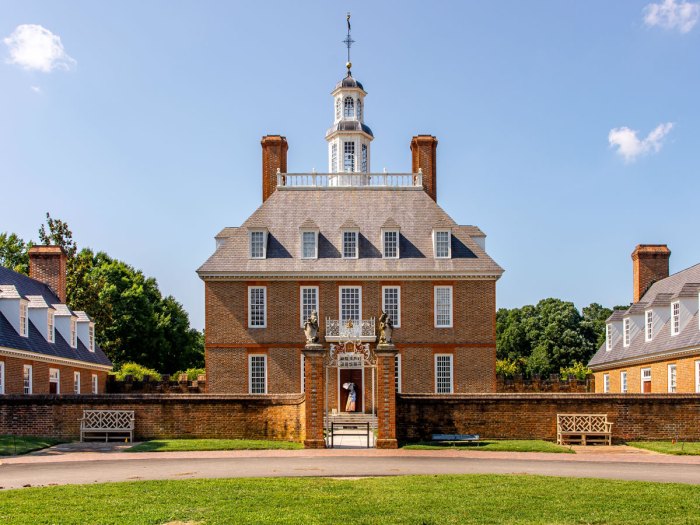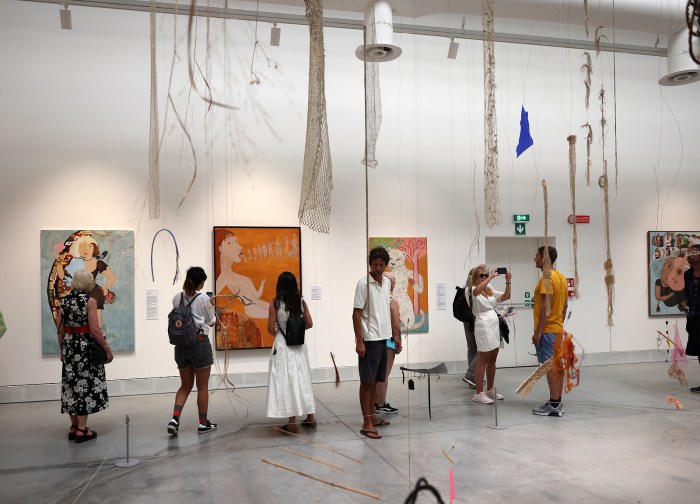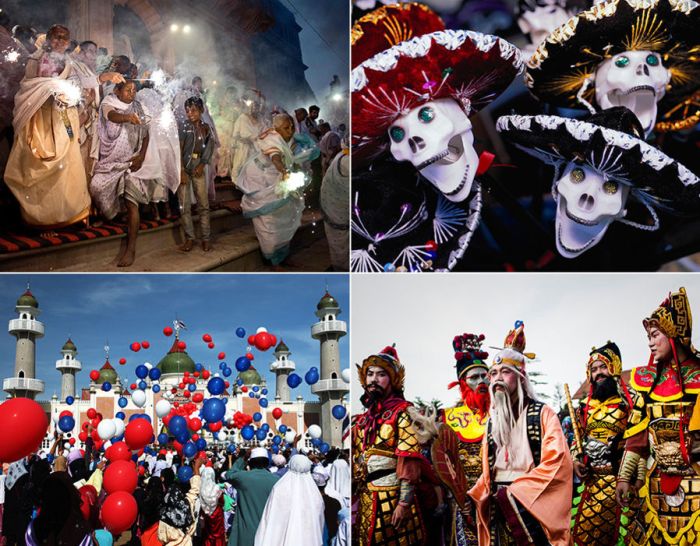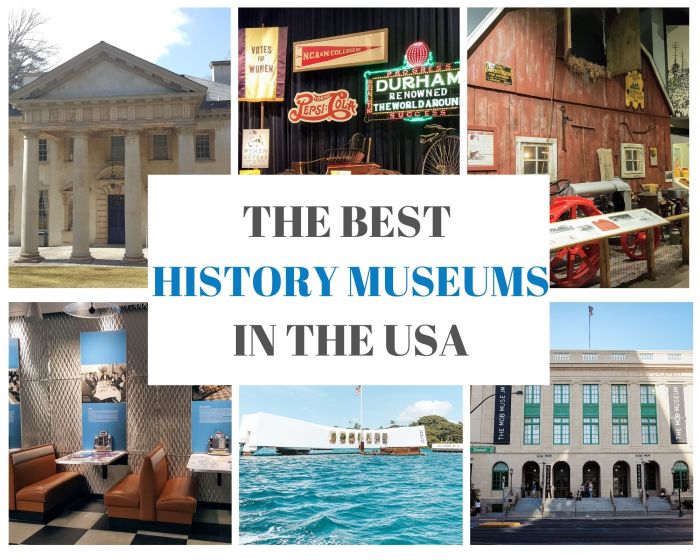
Best History Museums and Heritage Centers offer more than just exhibits; they provide immersive journeys through time, connecting us to the past and shaping our understanding of the present. From meticulously curated collections showcasing significant artifacts to interactive displays that bring history to life, these institutions offer a diverse range of experiences catering to both casual visitors and dedicated historians.
This exploration delves into the criteria defining excellence in these institutions, their global distribution, the innovative experiences they offer, and their crucial role in community building.
We’ll examine how these centers adapt to evolving technologies and visitor expectations, showcasing examples of exceptional museums and heritage centers around the world. We will also consider how a visit to a world-class history museum can be incorporated into a luxury travel itinerary, highlighting the unique appeal of combining historical exploration with other premium travel experiences.
Defining “Best” History Museums and Heritage Centers: Best History Museums And Heritage Centers
Defining the “best” history museums and heritage centers is subjective, depending heavily on individual preferences and priorities. However, several key criteria consistently contribute to a museum’s overall quality and appeal. A truly excellent institution excels in a combination of these factors, offering a rich and rewarding experience for a broad spectrum of visitors.
Criteria for evaluating history museums and heritage centers include the significance and breadth of their collections, the quality of their presentation and interpretation, the availability of educational resources, the overall visitor experience, and the accessibility of the institution to diverse audiences. A museum with a world-renowned collection might fall short if its exhibits are poorly designed or its staff unhelpful.
Conversely, a smaller museum with a more focused collection could be exceptional if it offers engaging exhibits and a welcoming atmosphere.
Collection Significance and Presentation Quality
The significance of a museum’s collection is paramount. It should represent a crucial period, event, or theme in history, offering artifacts and documents of genuine historical importance. The collection’s breadth and depth are also crucial; a comprehensive collection provides a more nuanced and complete understanding of the subject matter. Beyond significance, the
-presentation* of the collection is equally vital.
Well-designed exhibits, engaging narratives, and effective use of multimedia can transform a static collection into a dynamic and compelling experience. Poorly lit cases, cluttered displays, and confusing layouts can detract significantly from even the most impressive collection.
Educational Resources and Visitor Experience
High-quality history museums and heritage centers provide a range of educational resources beyond the exhibits themselves. These might include guided tours, workshops, educational programs for schools, online resources, and scholarly publications. The overall visitor experience is also critical. This encompasses factors such as the museum’s accessibility, the friendliness and helpfulness of staff, the clarity of signage, and the availability of amenities such as restrooms, cafes, and gift shops.
A positive visitor experience enhances enjoyment and encourages return visits.
Accessibility and Inclusivity
Accessibility is increasingly recognized as a crucial aspect of museum quality. This encompasses physical accessibility for visitors with disabilities, as well as intellectual and emotional accessibility for diverse audiences. Museums should strive to create exhibits and programs that are engaging and informative for visitors of all ages, backgrounds, and abilities. This may involve offering multilingual materials, providing audio guides, and incorporating interactive elements to cater to different learning styles.
Examples of Excellent History Museums
Different museums excel in different areas. The following table showcases some examples, highlighting their strengths:
| Museum Name | Location | Notable Collection | Unique Feature |
|---|---|---|---|
| The British Museum | London, UK | Rosetta Stone, Elgin Marbles, extensive collection of world cultures | Global scope and breadth of collection |
| The Metropolitan Museum of Art | New York City, USA | Extensive collection spanning various periods and cultures, including significant Egyptian and European art | Immense scale and diverse holdings |
| The National Museum of African American History and Culture | Washington, D.C., USA | Artifacts and documents relating to the African American experience | Focus on a specific and underrepresented history |
| The Anne Frank House | Amsterdam, Netherlands | Anne Frank’s hiding place and personal belongings | Powerful personal connection to a significant historical event |
Differences Between Museums for Casual and Serious Historians
The “best” museum can differ significantly for a casual visitor versus a serious historian. A casual visitor might prioritize an engaging and visually appealing experience, with clear narratives and interactive elements. They might value a well-organized layout, comfortable seating, and accessible information. A serious historian, on the other hand, will likely place greater emphasis on the depth and significance of the collection, the scholarly rigor of the interpretation, and the availability of primary source materials and academic resources.
They might appreciate detailed catalog information, opportunities for in-depth research, and access to archival collections.
Geographic Distribution of Top-Rated Museums
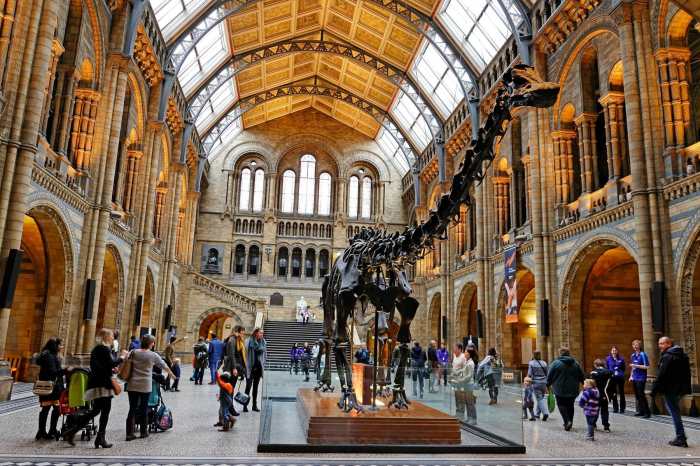
The global distribution of world-renowned history museums and heritage centers reveals fascinating patterns reflecting historical power dynamics, cultural influence, and the preservation of significant events and artifacts. Certain regions boast a higher concentration of these institutions than others, often correlating with areas of significant historical impact or national investment in cultural preservation. Analyzing this geographic distribution offers insights into the narratives these museums choose to highlight and the perspectives they offer on the past.A concentration of top-tier history museums is evident in several key regions.
The distribution is not uniform; instead, it reflects historical power structures and economic capacity for preservation efforts. For example, Europe and North America house a disproportionate number of internationally acclaimed museums due to their roles in shaping global history and their substantial resources allocated to cultural institutions. However, significant museums are also found in Asia, Africa, and South America, each showcasing unique narratives and perspectives.
Major Clusters of World-Renowned History Museums
A hypothetical map illustrating the global distribution of these museums would show dense clusters in several areas. Europe would display a high density, particularly in Western Europe, with major hubs in London (British Museum, National Gallery), Paris (Louvre Museum), Berlin (Pergamon Museum), and Rome (Vatican Museums). North America would feature a significant cluster, centered around Washington, D.C. (National Museum of American History, National Archives), New York City (Metropolitan Museum of Art), and other major cities.
Asia would showcase significant concentrations in China (National Museum of China, Shanghai Museum), Japan (Tokyo National Museum), and India (National Museum, New Delhi). While less dense, significant museums are also present in South America (e.g., the National Museum of Brazil in Rio de Janeiro) and Africa (e.g., the Egyptian Museum in Cairo).
Museum Examples and Their Historical Significance
- The British Museum, London: This museum houses a vast collection spanning human history and culture, from the Rosetta Stone to the Elgin Marbles. Its collection reflects Britain’s historical role in global exploration and colonialism, a narrative that is increasingly subject to critical examination and reinterpretation.
- The Louvre Museum, Paris: Home to iconic works like the Mona Lisa and Venus de Milo, the Louvre showcases French artistic and cultural heritage, reflecting centuries of French influence in art, architecture, and culture. Its collection, built over centuries, offers a view of French history and its interaction with other global cultures.
- The National Museum of China, Beijing: This museum presents a comprehensive overview of Chinese history and culture, from ancient dynasties to modern times. Its collection emphasizes the continuity and development of Chinese civilization, often framing China’s historical experience within a narrative of national unity and progress.
- The Egyptian Museum, Cairo: Housing a vast collection of ancient Egyptian artifacts, including treasures from Tutankhamun’s tomb, this museum focuses on the achievements of one of the world’s oldest civilizations. Its narrative centers on the Pharaohs, religious beliefs, and the advancements of ancient Egyptian society.
Comparative Historical Narratives
Museums in different regions often present contrasting historical narratives, reflecting diverse perspectives and priorities. European museums, for instance, frequently emphasize the development of Western civilization, while museums in other parts of the world may focus on indigenous histories, often marginalized in traditional Western accounts. The selection of artifacts, the interpretation of events, and the overall presentation of history can vary significantly, reflecting different national identities, cultural values, and political contexts.
For example, the portrayal of colonialism will differ markedly between a museum in a former colonial power and a museum in a formerly colonized nation. This diversity of perspectives enhances our understanding of history, allowing for a more nuanced and complete picture of the past.
Types of Historical Experiences Offered
History museums and heritage centers are no longer simply repositories of artifacts; they are dynamic spaces offering a wide range of engaging experiences designed to connect visitors with the past in meaningful ways. These institutions strive to cater to diverse learning styles and interests, fostering a deeper understanding and appreciation of history. This variety of offerings enhances accessibility and ensures a more impactful and memorable visit for all.Modern history museums and heritage centers employ diverse methods to engage visitors and transmit historical knowledge.
They go beyond static displays, actively shaping visitor experiences through interactive elements and varied learning opportunities. This ensures that history is not just passively received but actively explored and understood.
Interactive Exhibits and Immersive Environments
Many museums now incorporate interactive exhibits, allowing visitors to actively participate in the learning process. These can range from touch-screen displays providing additional information to hands-on activities that simulate historical processes. For example, a museum might feature a virtual reality experience allowing visitors to “walk” through a Roman marketplace or reconstruct a medieval castle using digital building blocks.
The educational value lies in the active engagement; visitors are not just reading about history, they are experiencing it. This active participation enhances memory retention and fosters a deeper connection to the subject matter. The impact on visitor engagement is significant, leading to increased satisfaction and a more profound understanding of the historical context.
Guided Tours and Educational Programs
Guided tours, led by knowledgeable docents or historians, provide a curated experience, offering insights and interpretations that enrich the visitor’s understanding. These tours can be tailored to specific interests, such as focusing on a particular historical period or theme. Furthermore, museums often offer educational programs, including lectures, workshops, and seminars, catering to various age groups and levels of expertise.
These programs provide opportunities for in-depth learning and discussion, fostering critical thinking and historical analysis. For instance, a museum might offer a family-friendly workshop on 19th-century crafts or a lecture series exploring the social impact of a significant historical event.
Unique and Innovative Museum Experiences, Best History Museums and Heritage Centers
Museums are increasingly incorporating innovative approaches to engage visitors and enhance the learning experience.
- Living History Interpretations: Actors portraying historical figures or engaging in demonstrations of historical crafts provide an immersive and memorable experience. The educational value stems from the immediate connection with the past, making history more relatable and tangible. For instance, a reenactment of a historical battle or a demonstration of traditional weaving techniques can significantly increase visitor engagement.
- Gamification: Incorporating game mechanics into exhibits, such as scavenger hunts or interactive challenges, can make learning fun and engaging, particularly for younger audiences. This approach leverages the principles of game design to enhance motivation and knowledge retention. A museum might create a mobile app that guides visitors on a historical scavenger hunt through the exhibits, unlocking information and rewards as they progress.
- Digital Storytelling: Utilizing digital technologies to tell historical narratives, including interactive timelines, 3D models, and virtual tours, allows museums to reach broader audiences and present information in engaging ways. This approach offers accessibility to individuals with varying learning styles and preferences. A museum could use augmented reality to overlay historical images onto a physical space, allowing visitors to see what a location looked like centuries ago.
Adapting to Changing Technologies and Visitor Expectations
Museums are continuously adapting to changing technologies and visitor expectations. The increasing use of mobile technology has led to the development of museum apps that provide interactive maps, audio guides, and additional information about exhibits. Many museums also utilize social media platforms to engage with visitors, share information, and promote events. Furthermore, the rise of accessibility concerns has led to the development of inclusive exhibits and programs designed to cater to visitors with disabilities.
These adaptations reflect a commitment to making history accessible and engaging for a diverse audience. For example, museums are increasingly incorporating audio descriptions for visually impaired visitors and tactile exhibits for those with visual impairments.
The Role of Heritage Centers in Community Building
Heritage centers serve as vital anchors within their communities, acting as custodians of local history and culture. They go beyond simply displaying artifacts; they actively engage residents, fostering a sense of shared identity and pride. This engagement strengthens community bonds, promotes understanding of the past, and contributes to the overall well-being of the area.Heritage centers play a crucial role in preserving and promoting local history and culture by collecting, documenting, and interpreting the stories of a community.
They provide a space for residents to connect with their past, learn about their heritage, and share their experiences. This preservation effort ensures that future generations can appreciate and understand the unique character of their community. Furthermore, by offering educational programs and engaging events, heritage centers actively promote the ongoing relevance of local history and culture within the contemporary context.
Examples of Community Engagement in Heritage Centers
The following table showcases heritage centers that successfully engage their communities through diverse programming and initiatives:
| Heritage Center Name | Location | Community Engagement Activities | Impact on the Community |
|---|---|---|---|
| The Strong National Museum of Play | Rochester, New York, USA | Interactive exhibits, family programs, educational workshops, community partnerships, and special events related to play and childhood experiences. | Increased tourism, fostered family bonding, provided educational opportunities for children and adults, and strengthened Rochester’s identity as a family-friendly city. |
| The National Museum of African American History and Culture | Washington, D.C., USA | Rotating exhibitions, educational programs, community partnerships, oral history projects, and events celebrating African American culture and history. | Increased understanding and appreciation of African American history and culture, fostered dialogue on important social issues, and created a space for community gathering and reflection. |
| The Glenbow Museum | Calgary, Alberta, Canada | Diverse exhibitions focusing on Western Canadian art and history, community workshops, educational programs for schools, and collaborations with local artists and organizations. | Promoted appreciation for local art and history, provided educational resources for the community, and fostered a sense of civic pride in Calgary’s cultural heritage. |
| The British Museum | London, England | Extensive collections spanning world history and culture, educational programs for all ages, community outreach initiatives, and partnerships with local schools and organizations. | Increased tourism, fostered cross-cultural understanding, and provided educational opportunities for a diverse range of audiences, enriching London’s cultural landscape. |
Challenges Faced by Heritage Centers
Maintaining relevance and attracting diverse audiences presents ongoing challenges for heritage centers. Financial constraints often limit programming and outreach efforts. Competition for attention in a digital age requires innovative strategies to engage younger generations and those less familiar with traditional museum settings. Furthermore, ensuring accessibility for individuals with disabilities and creating inclusive environments that welcome diverse perspectives are crucial aspects of effective community engagement.
Addressing these challenges requires creative funding models, innovative digital engagement strategies, and a commitment to inclusivity and accessibility.
Luxury Travel Experiences Related to History
Integrating a visit to a world-class history museum into a luxury travel itinerary elevates the experience beyond a simple sightseeing trip. It provides a unique opportunity for intellectual stimulation and cultural immersion, enriching the overall luxury experience and offering a deeper understanding of the destinations visited. The careful selection of museums and the integration of other high-end amenities create a truly memorable and sophisticated journey.
Incorporating History Museums into High-End Travel Itineraries
A high-end travel itinerary incorporating history museums should prioritize ease and exclusivity. This means pre-booked private tours, skip-the-line access, and perhaps even after-hours access to certain exhibits. Accommodation should be in luxury hotels near the museums or offering convenient private transportation. The itinerary should allow ample time for exploration, contemplation, and reflection, avoiding rushed schedules. Furthermore, the travel experience should be seamlessly integrated with other luxury elements to create a cohesive and memorable journey.
Sample Luxury Travel Package: A Journey Through History
This seven-day itinerary focuses on European history, showcasing a blend of museum visits and other luxury experiences.
Day 1-2: London, England
Accommodation: The Dorchester, a luxury hotel in Mayfair. Transportation: Private chauffeured car service. Activities: Private tour of the British Museum, focusing on specific periods or collections based on the traveler’s interests. Afternoon tea at The Ritz. Evening: Private dinner at a Michelin-starred restaurant.
Day 3-4: Paris, France
Transportation: Private jet transfer from London to Paris. Accommodation: Hotel Plaza Athénée overlooking the Eiffel Tower. Activities: Private guided tour of the Louvre Museum, concentrating on key masterpieces. Visit to the Palace of Versailles with a private guide. Exclusive shopping experience at haute couture boutiques.
Day 5-6: Florence, Italy
Transportation: Private high-speed train from Paris to Florence. Accommodation: Hotel Pitti Palace al Ponte Vecchio. Activities: Private tour of the Uffizi Gallery, focusing on Renaissance art. Visit to the Accademia Gallery to see Michelangelo’s David. Cooking class focusing on Tuscan cuisine.
Exclusive wine tasting at a renowned Tuscan vineyard.
Day 7: Departure
Transportation: Private transfer to Florence Airport for departure.
Combining Historical Exploration with Other Luxury Travel Experiences
The appeal of combining historical exploration with other luxury travel experiences lies in the creation of a holistic and enriching journey. Private island vacations offer tranquility and relaxation after the stimulating experience of museum visits. High-end travel accessories, such as bespoke luggage and personalized guides, enhance the overall travel experience. Exclusive experiences, such as private concerts or access to restricted areas, add an element of exclusivity.
Premium travel guides provide in-depth information and insider knowledge, enriching the historical exploration. Luxury train journeys offer a comfortable and scenic way to travel between destinations, adding another layer of luxury to the experience. The combination creates a multifaceted journey, where the intellectual stimulation of historical exploration is perfectly balanced with the comfort and exclusivity of luxury travel.
Visual Representations of Museum Highlights

Museums utilize a variety of methods to present historical information, but the most impactful often involve compelling visual representations of significant artifacts and thoughtfully designed architectural spaces. These elements work in tandem to create a memorable and enriching experience for visitors, fostering a deeper understanding and appreciation of history. The selection and presentation of artifacts, coupled with the museum’s architecture, significantly influence the overall narrative and the visitor’s emotional connection to the past.
Historically Significant Artifacts and Exhibits
Three examples of historically significant artifacts and exhibits illustrate the power of visual representation in museums. These items, chosen for their historical context, cultural significance, and artistic merit, offer a glimpse into different aspects of the human experience across diverse cultures and time periods.The Rosetta Stone, housed in the British Museum, is arguably one of the most important artifacts in the history of archaeology and linguistics.
This dark grey basalt stone, inscribed with the same decree in three different scripts – hieroglyphic, Demotic, and Ancient Greek – provided the key to deciphering hieroglyphs, unlocking a vast trove of ancient Egyptian history and culture previously inaccessible. Its rough, weathered surface speaks to its age and journey through time, while the meticulously carved script hints at the sophisticated writing system of ancient Egypt.
The stone’s significance lies not just in its ability to unlock a lost language but also in its representation of the power of intellectual pursuit and cross-cultural exchange.The “Starry Night” painting by Vincent van Gogh, exhibited at the Museum of Modern Art (MoMA) in New York City, is a masterpiece of Post-Impressionism. The swirling, impasto brushstrokes create a vibrant and emotional depiction of the night sky over Saint-Rémy-de-Provence, with the village nestled below.
The exaggerated scale of the cypress tree, the intense color palette, and the expressive brushwork convey Van Gogh’s emotional state and artistic vision. Its cultural significance lies in its enduring popularity and its impact on the development of modern art. The painting’s emotional power and artistic skill continue to resonate with viewers, making it a timeless masterpiece.The Terracotta Army, discovered in Xi’an, China, and now displayed in the Pit No.
1 Museum, is a breathtaking collection of over 8,000 life-sized terracotta soldiers, horses, and chariots. Each figure is uniquely crafted, with individual facial features and postures, offering a glimpse into the military might and artistry of the Qin Dynasty. The sheer scale of the army is awe-inspiring, while the detail in each figure’s craftsmanship highlights the skill and dedication of the artisans who created them.
Their historical context reveals details about ancient Chinese military organization, burial practices, and artistic traditions, offering a powerful visual narrative of a pivotal moment in Chinese history.
Architectural Design of Renowned History Museums
The architectural design of a history museum significantly influences the visitor experience, shaping how the artifacts and exhibits are presented and perceived. Three examples highlight how architectural features can enhance the display and interpretation of history.The Louvre Museum in Paris, France, is renowned for its iconic glass pyramid, a striking contrast to the classical architecture of the surrounding palace.
The pyramid serves as a modern entrance, drawing visitors into the historical heart of the museum, while the palace itself, with its grand halls and intricate detailing, provides a majestic backdrop for the art and artifacts within. The juxtaposition of old and new architecture creates a dynamic and engaging atmosphere, highlighting the passage of time and the evolution of artistic styles.The Guggenheim Museum Bilbao, designed by Frank Gehry, is a masterpiece of contemporary architecture.
Its titanium-clad curves and flowing forms create a dramatic and visually arresting presence. The museum’s design is not merely decorative; its undulating interior spaces guide visitors through the exhibits in a fluid and engaging way, fostering a unique spatial experience that complements the art on display. The building itself becomes a work of art, interacting with and enhancing the artistic experience within.The National Museum of African American History and Culture in Washington, D.C., features a striking crown-like structure that symbolizes the aspirations and achievements of African Americans.
The bronze-colored metal cladding evokes the texture and richness of African textiles, while the building’s tiered design echoes the layered history and diverse experiences of the African American community. The architecture serves not only as a beautiful and impactful visual element but also as a powerful symbol of the museum’s mission and the stories it tells. The design consciously integrates the cultural significance of its subject matter into its form.
Ultimately, the best history museums and heritage centers are more than repositories of the past; they are vibrant hubs of learning, cultural exchange, and community engagement. By carefully considering factors like collection quality, presentation style, educational resources, visitor experience, and accessibility, we can identify and appreciate institutions that truly excel in bringing history to life and fostering a deeper understanding of our shared human heritage.
The exploration of these centers, their global reach, and their innovative approaches reveals not only the richness of our past but also the enduring power of history to inform and inspire us in the present.
FAQ Corner
What is the difference between a history museum and a heritage center?
While both preserve and interpret the past, history museums typically focus on broader historical narratives and artifacts, while heritage centers often concentrate on the history of a specific community or region.
How can I find museums suitable for children?
Many museums offer family-friendly exhibits, interactive displays, and educational programs specifically designed for younger audiences. Check museum websites for details on family programs.
Are there accessibility options at most history museums?
Increasingly, museums prioritize accessibility. Check individual museum websites for information on wheelchair access, audio guides, and other accessibility features.
How much time should I allocate for a museum visit?
This depends on the size and scope of the museum. Allow at least a few hours for a comprehensive visit, but smaller museums might require less time.
